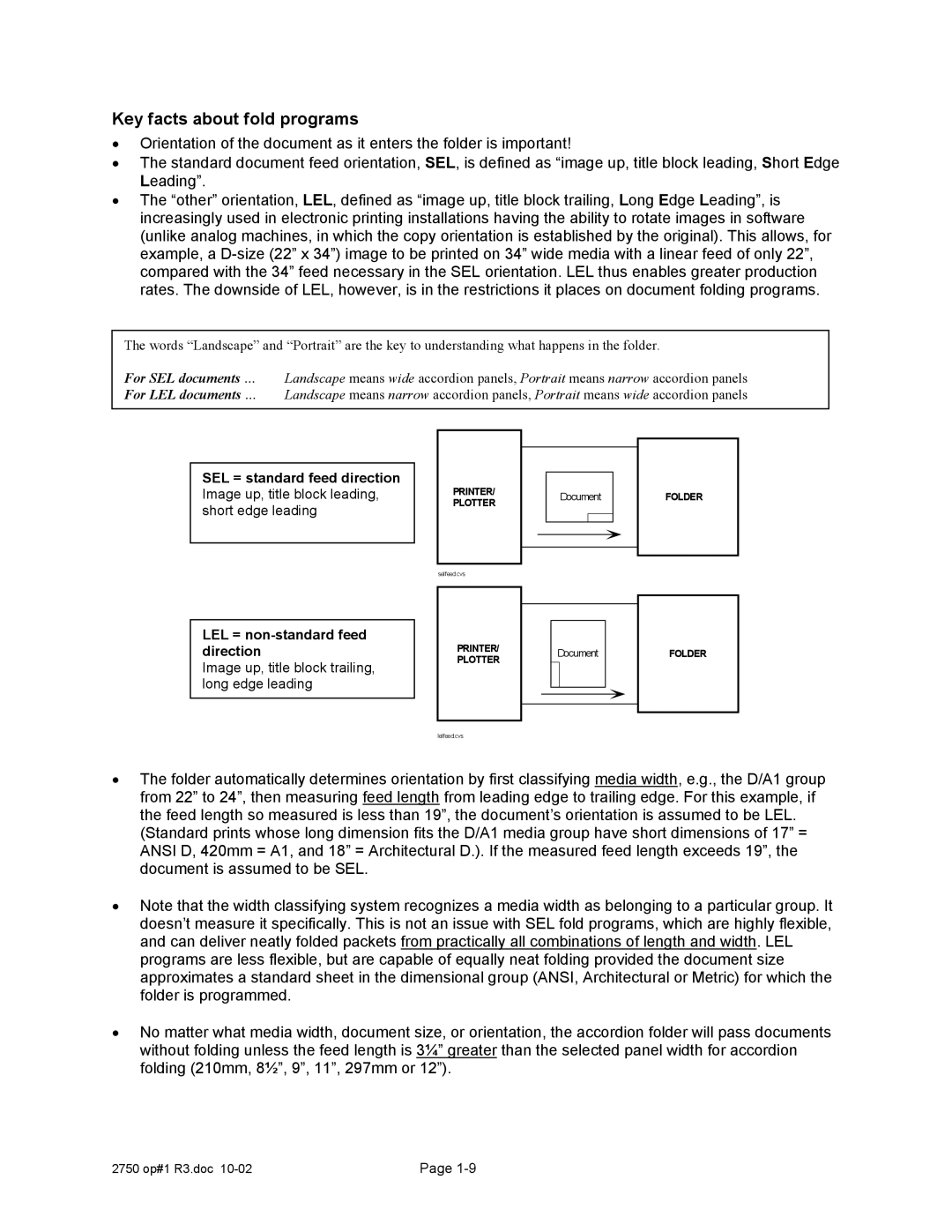
Key facts about fold programs
•Orientation of the document as it enters the folder is important!
•The standard document feed orientation, SEL, is defined as “image up, title block leading, Short Edge Leading”.
•The “other” orientation, LEL, defined as “image up, title block trailing, Long Edge Leading”, is increasingly used in electronic printing installations having the ability to rotate images in software (unlike analog machines, in which the copy orientation is established by the original). This allows, for example, a
The words “Landscape” and “Portrait” are the key to understanding what happens in the folder.
For SEL documents … Landscape means wide accordion panels, Portrait means narrow accordion panels For LEL documents … Landscape means narrow accordion panels, Portrait means wide accordion panels
SEL = standard feed direction
Image up, title block leading, short edge leading
PRINTER/ PLOTTER
Document
FOLDER
selfeed.cvs
LEL = non-standard feed direction
Image up, title block trailing, long edge leading
PRINTER/
PLOTTER
lelfeed.cvs
Document
FOLDER
•The folder automatically determines orientation by first classifying media width, e.g., the D/A1 group from 22” to 24”, then measuring feed length from leading edge to trailing edge. For this example, if the feed length so measured is less than 19”, the document’s orientation is assumed to be LEL. (Standard prints whose long dimension fits the D/A1 media group have short dimensions of 17” = ANSI D, 420mm = A1, and 18” = Architectural D.). If the measured feed length exceeds 19”, the document is assumed to be SEL.
•Note that the width classifying system recognizes a media width as belonging to a particular group. It doesn’t measure it specifically. This is not an issue with SEL fold programs, which are highly flexible, and can deliver neatly folded packets from practically all combinations of length and width. LEL programs are less flexible, but are capable of equally neat folding provided the document size approximates a standard sheet in the dimensional group (ANSI, Architectural or Metric) for which the folder is programmed.
•No matter what media width, document size, or orientation, the accordion folder will pass documents without folding unless the feed length is 3¼” greater than the selected panel width for accordion folding (210mm, 8½”, 9”, 11”, 297mm or 12”).
2750 op#1 R3.doc | Page |
